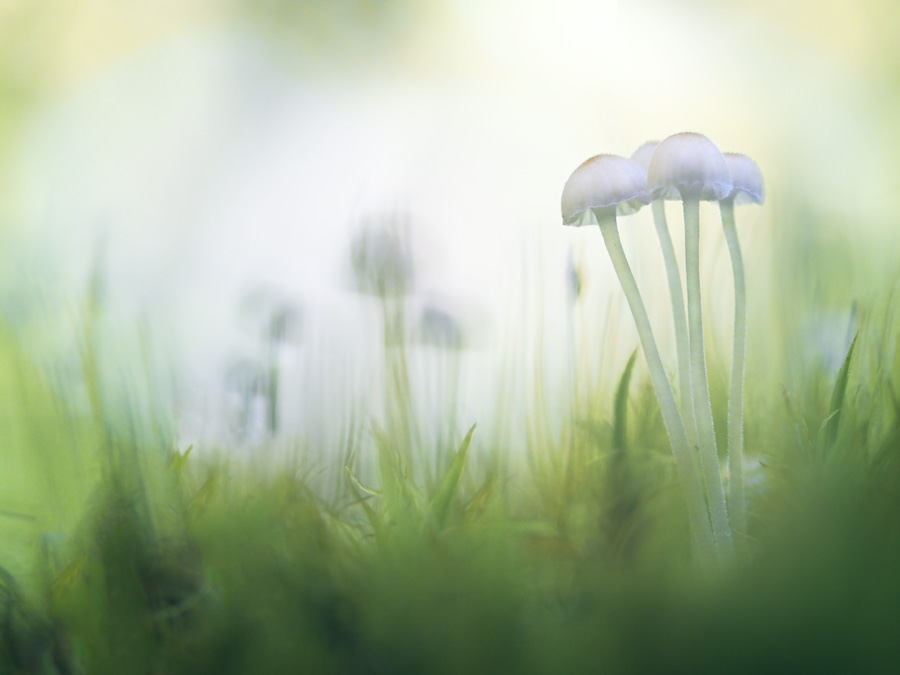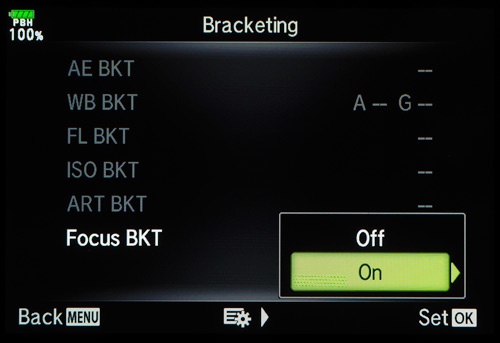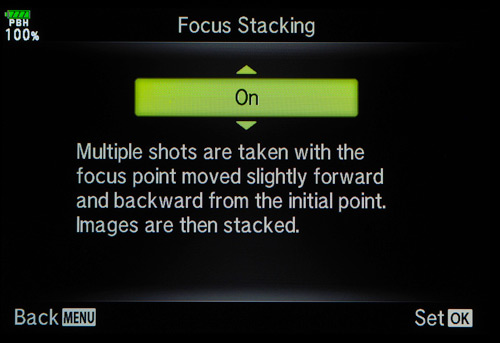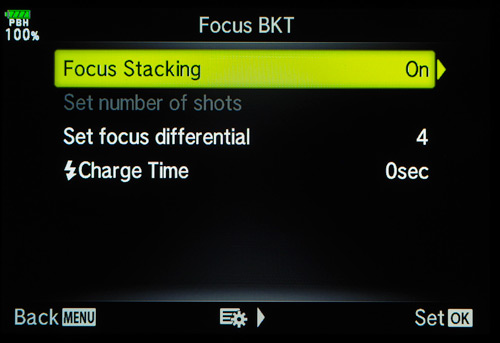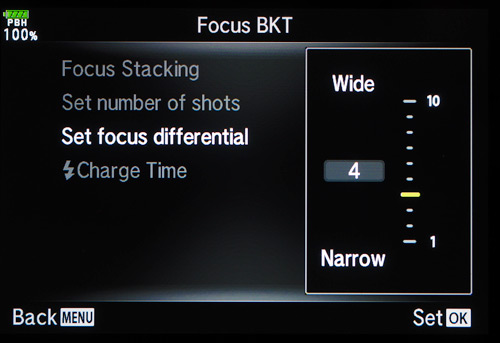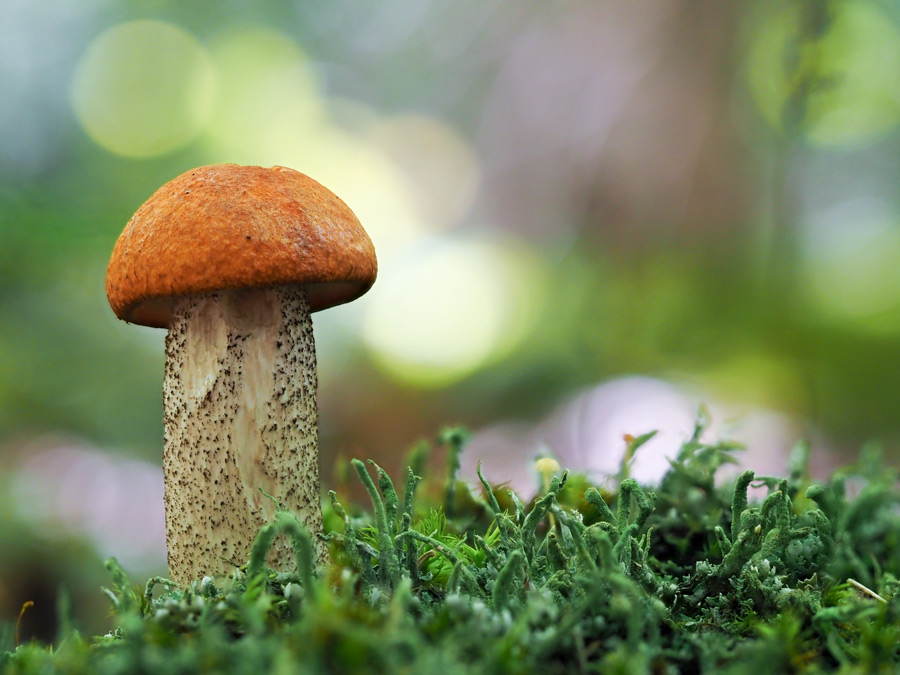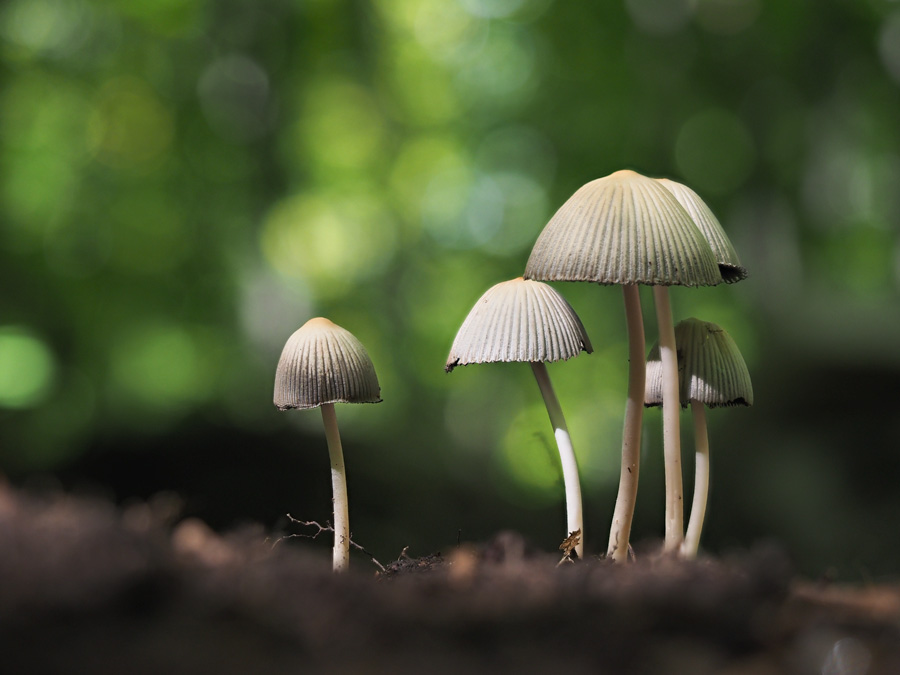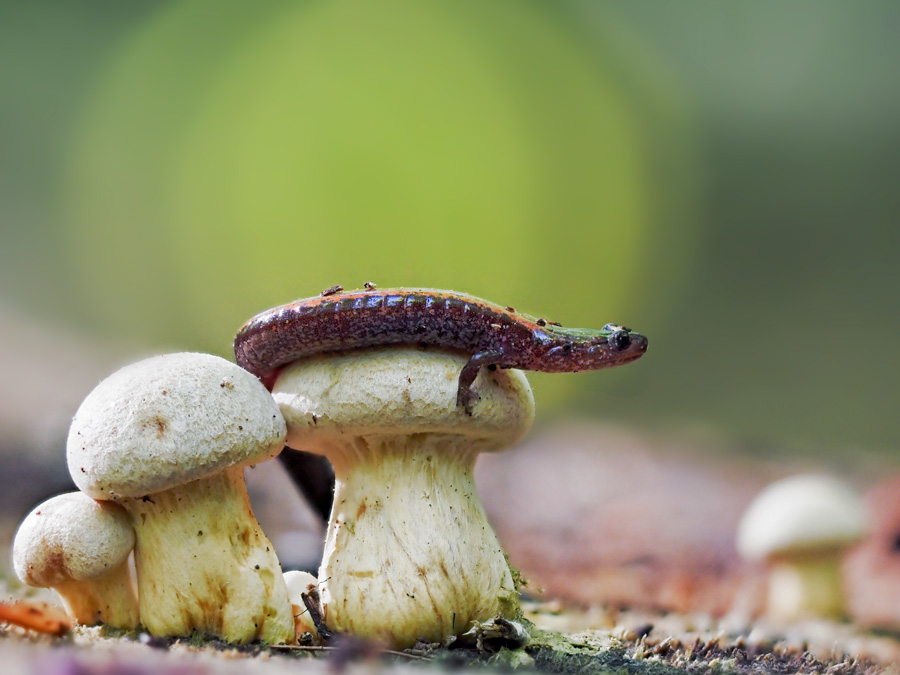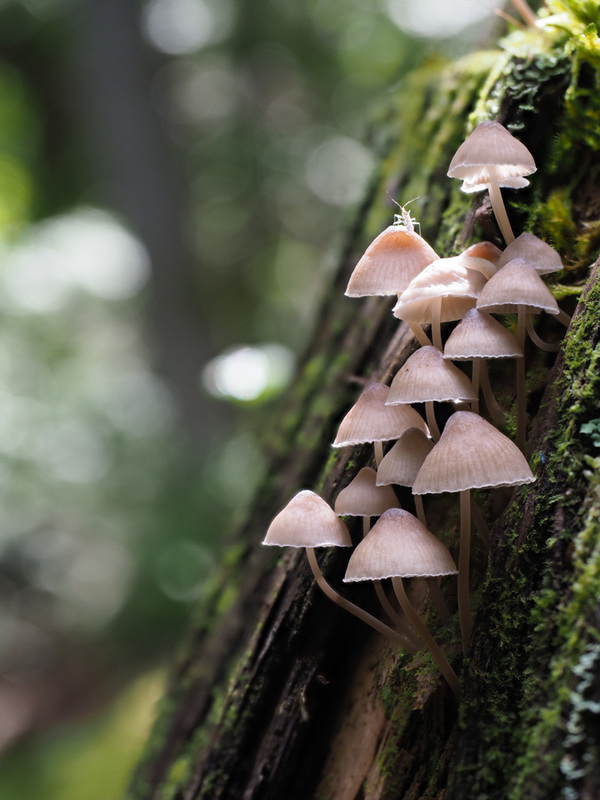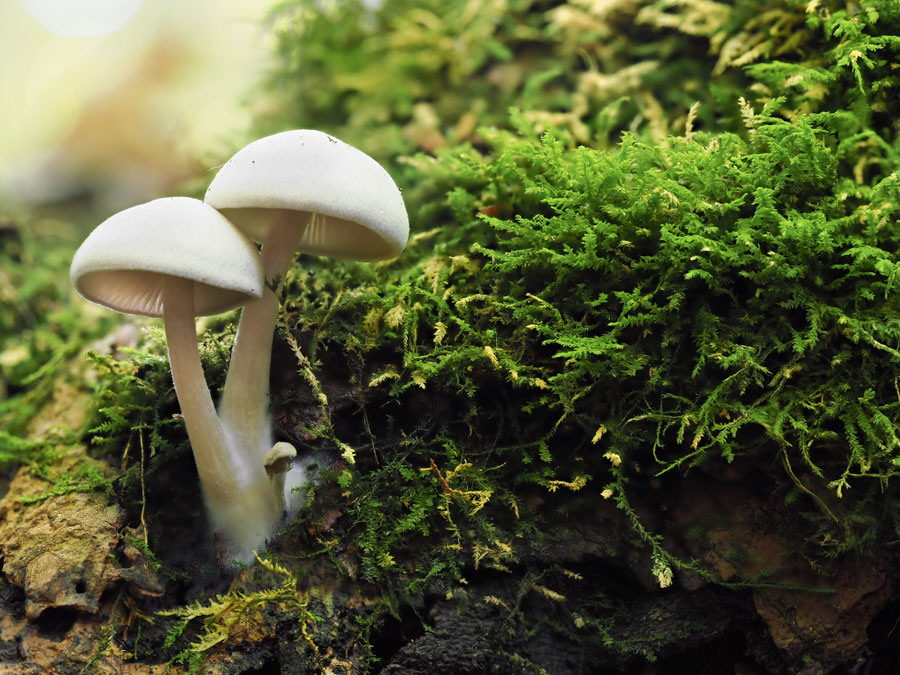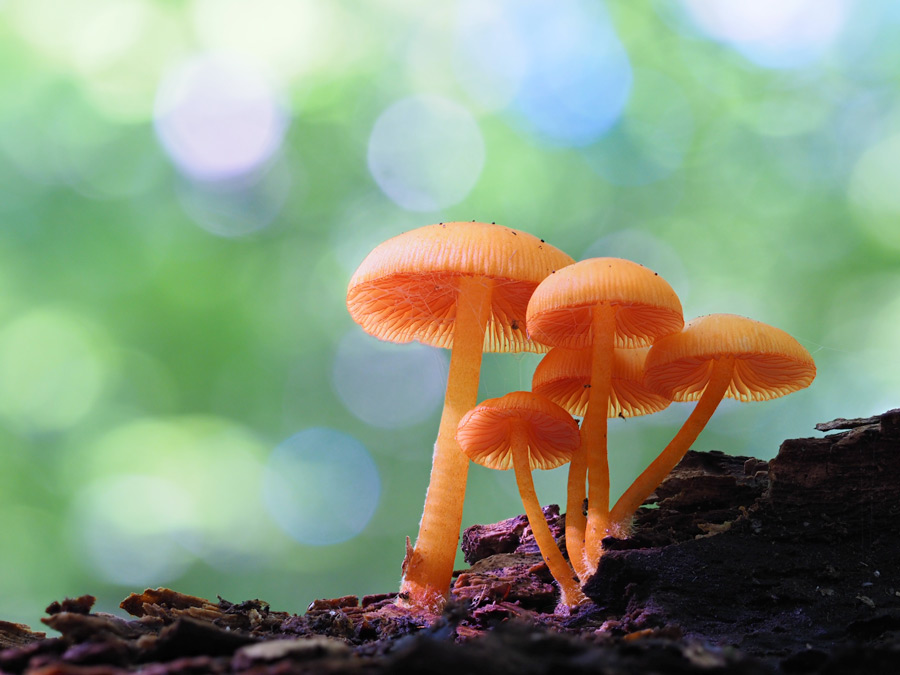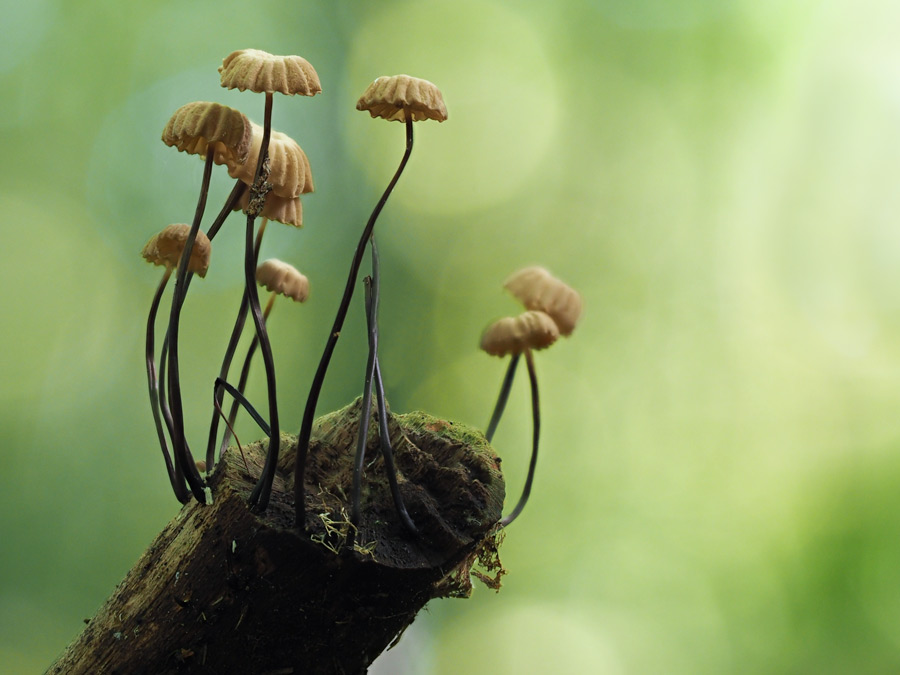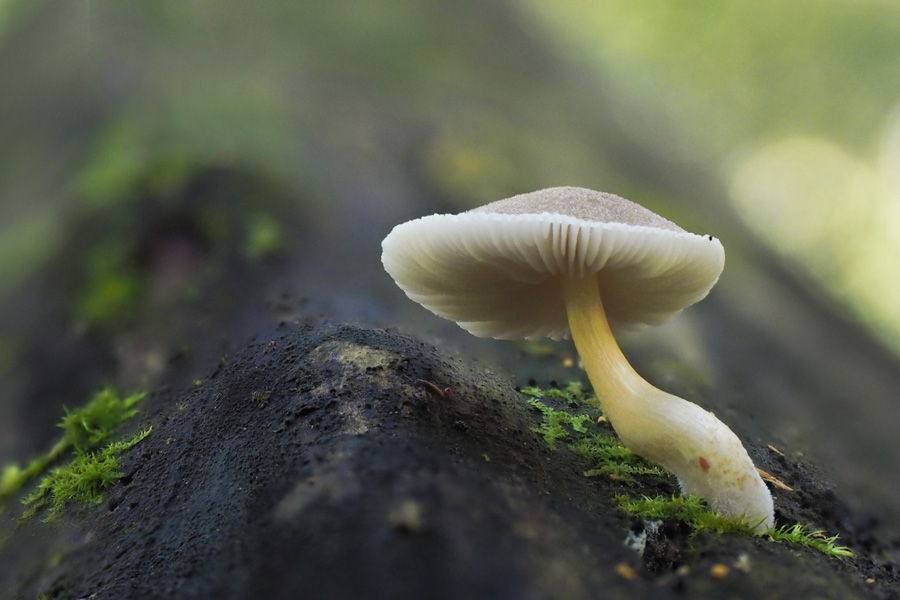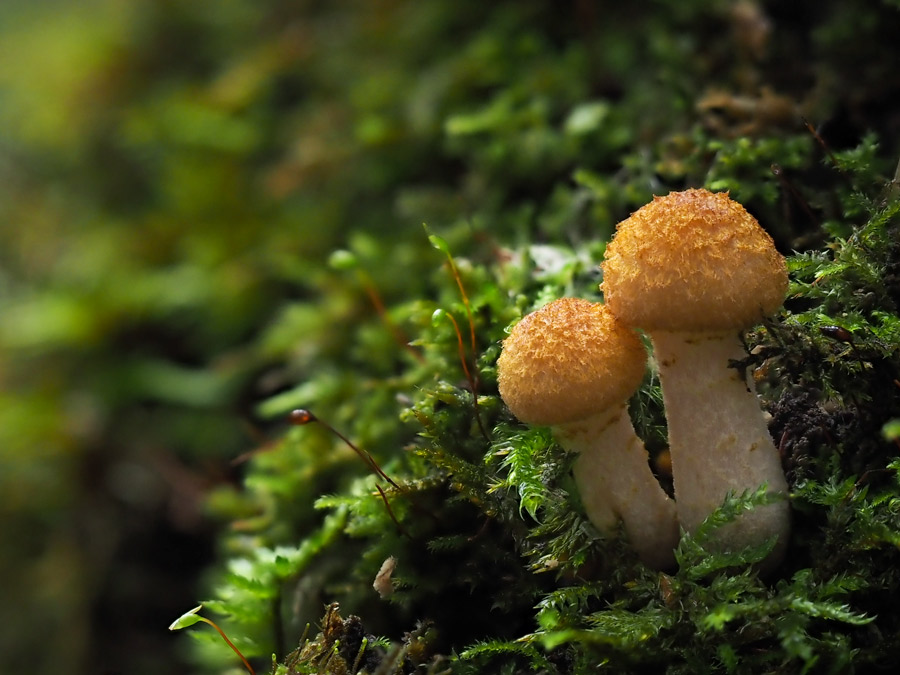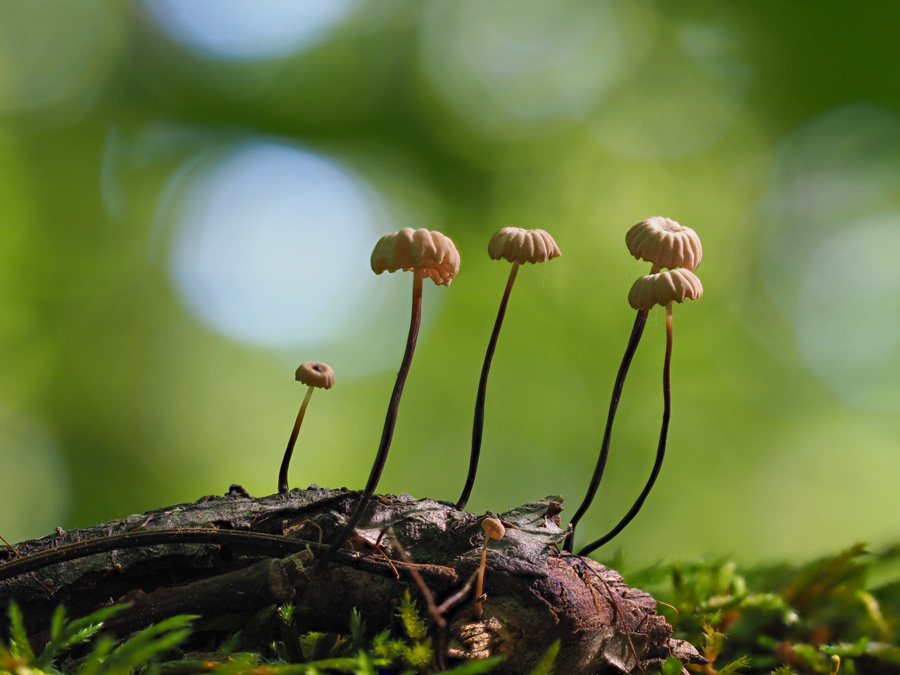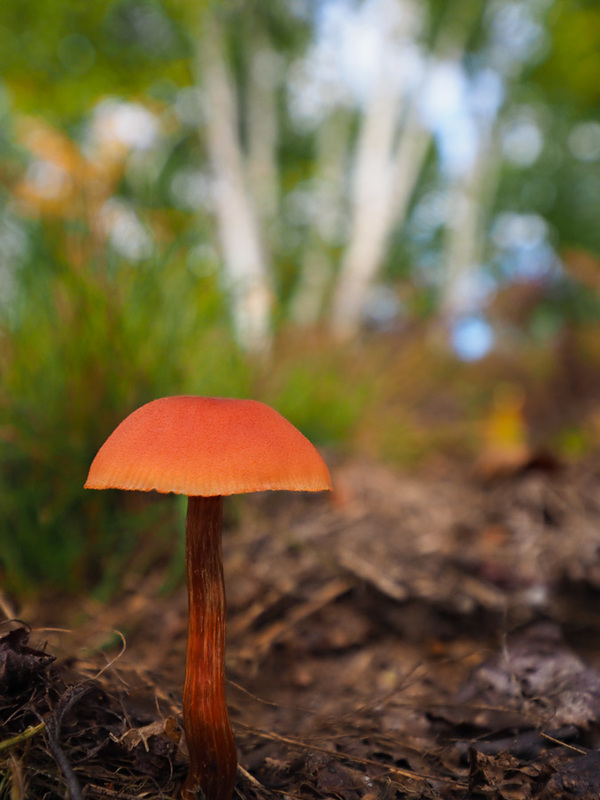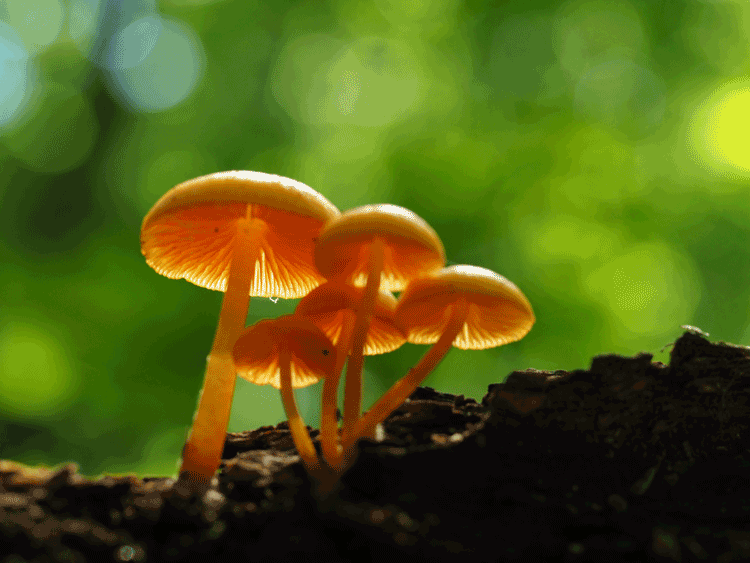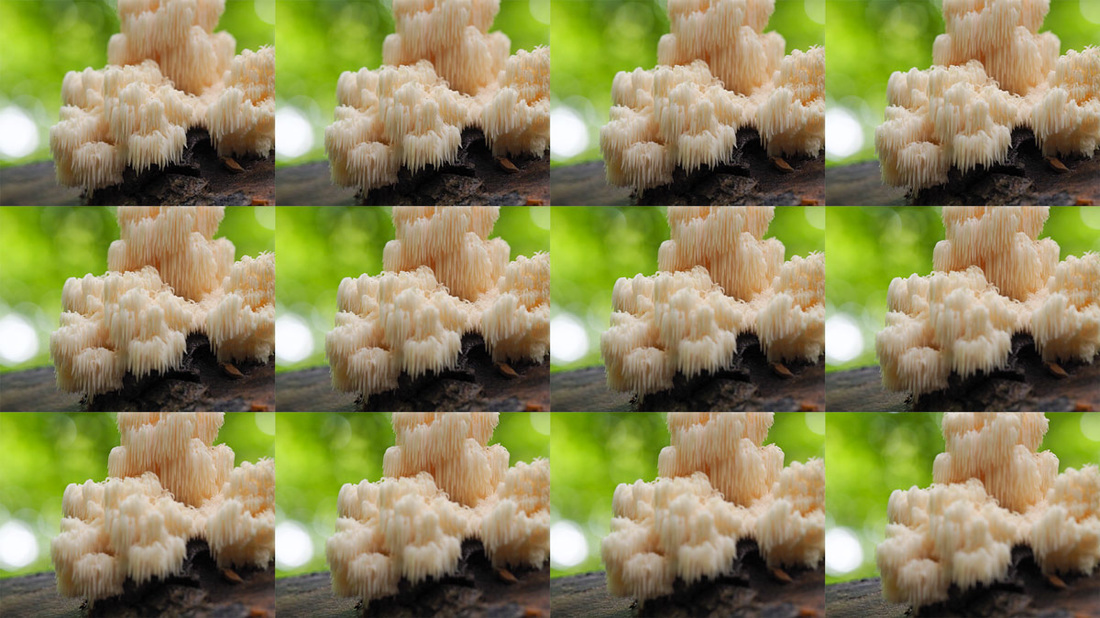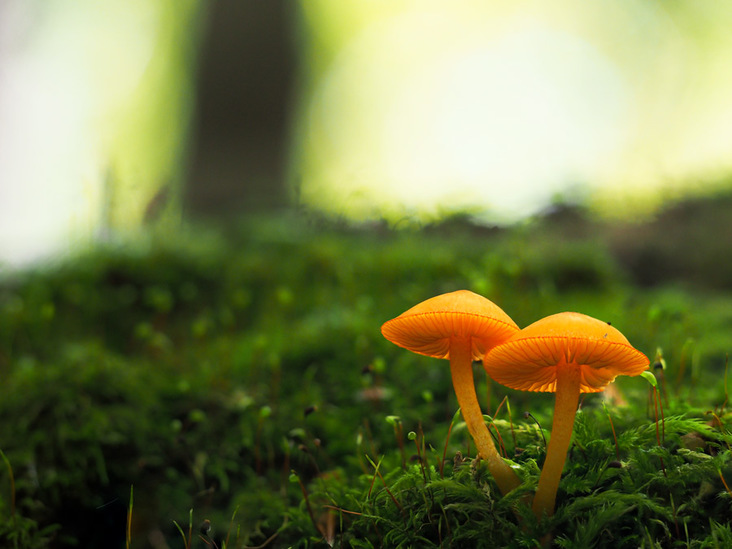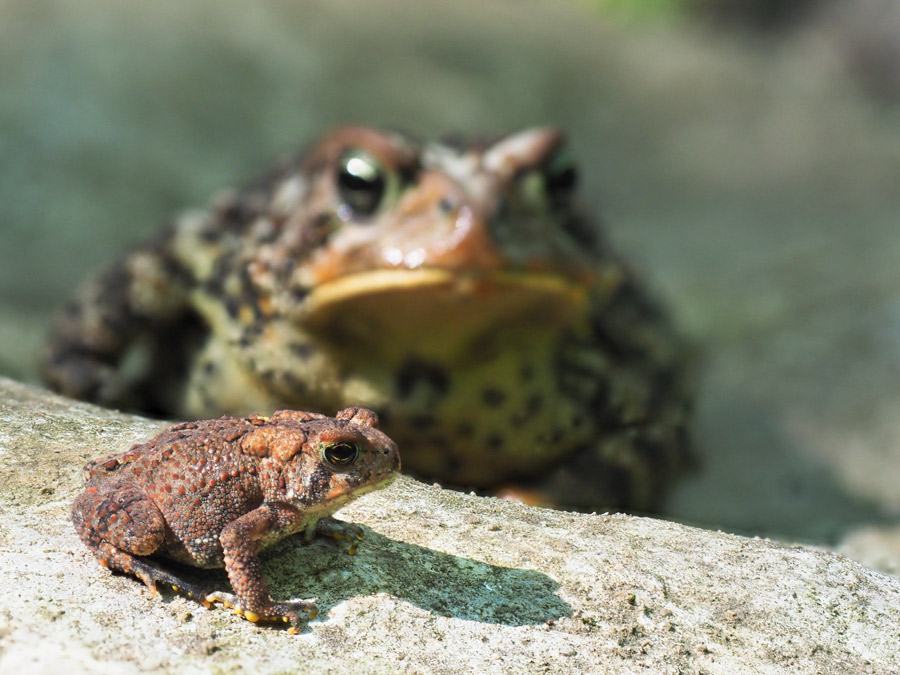|
Every autumn, in the forests near my home, a massive reproductive event takes place that I just can't ignore. It starts during the warm days of summer when long tendrils of mycelium digest their way through the rotting corpses of fallen forest detritus. When autumn arrives, an asexual explosion erupts from the earth, as the fruiting bodies strive to spread their genetically identical spores throughout the forest floor. We're talking mushrooms here, people! And I love to photograph them. Mushrooms grow remarkably quickly and decay even quicker. But if you time it right they can be quite photogenic. Many species are so small that a macro lens is an absolute necessity. Anyone who has worked with a macro lens recognizes that it can be a real challenge to achieve a sharp subject from front to back and still maintain a nice, soft, defocused background. In fact, with most subjects it's an impossible task. Enter focus stacking or focus bracketing. The concept is quite simple. Take a series of photos with each one being focused at a slightly different point on your subject. Then use software to stack and process them in order to capture a greater depth of field than is capable with just a single shot using a macro lens, all while maintaining nice bokeh in your final image. Olympus developed built-in focus stacking in their OMD E-M1 with the release of the 4.0 firmware update. That feature has been included and improved in the E-M1 Mark II. Although focus bracketing will be addressed, the main focus of this post is the focus stacking feature. All of the images have been photographed using the new Mark II model. Equipment The following Olympus cameras have built-in focus bracketing and focus stacking. OMD E-M1 Mark II OMD E-M1 (firmware version 4.0 and newer) OMD E-M5 Mark II (firmware version 4.0) Not every lens is compatible with the focus bracketing/stacking feature. Here is the most recent list of stacking compatible lenses (as of April 2018). M.Zuiko ED 7-14mm f/2.8 PRO M.Zuiko ED 12-40 f/2.8 PRO M.Zuiko ED 12-100 f/4 PRO M.Zuiko ED 40-150 f/2.8 PRO M.Zuiko ED 300mm f/4 IS PRO M.Zuiko ED 8mm f/1.8 Fisheye PRO M.Zuiko ED 30mm f/3.5 Macro M.Zuiko ED 60mm f/2.8 Macro A tripod is definitely recommended. However, a few of the shots in this post were hand-held and for others I placed the camera on the ground. The Process The following steps will set up the camera for focus stacking.
Generally I have found that a wider aperture and a narrow focus differential yields excellent results with the fungal subjects in this post. In all of the photos below I have included the lens, basic camera settings and focus differential. Although I have found the focus stacking feature to yield excellent results, it is not infallible. There are times where the camera cannot process the stacked image and a message pops up stating, "Focus stacking error. Image composite failed." This is usually due to camera or subject movement, however I have also had it occur when the lighting changes rapidly during the sequence. Bracketing vs. Stacking I have found the built-in focus stacking to be remarkably accurate. So why would you opt for bracketing vs. stacking? Here are a couple of reasons;
To access the bracketing options turn off focus stacking. This allows you to choose from 3 to 999 shots with a focus differential between 1 and 10. For the image above, I selected 20 shots with a focus differential of 2. After the sequence I had a look at each one using the LCD and determined that I had captured sufficient detail throughout the range. Upon uploading the images I determined that I only needed 12 of those images to clearly capture the fungus from front to back. I then used Photoshop to stack them. This gave me greater control over the process (which I like), and there was no trimming of the final image. That being said, I really do like the convenience of the built-in focus stacking and how easy it is to use. A Final Photo It was my interest in the sheer number of mushrooms sprouting up in a local bush lot that inspired me to experiment a bit more with focus bracketing and to write this post. However, there are plenty of subjects out there where focus bracketing can be used. The photograph below is one example, but with full disclosure, it was a complete accident. Shortly after photographing a mushroom, I came across two toads on the trail. I bent down quickly, framed the shot, and pressed the shutter release only to realize I still had focus stacking enabled. Here's that shot. For more information on the features of the new E-M1 Mark II, read my blog post.
48 Comments
11/5/2016 03:27:06 am
Thanks! Clear explanation and wonderful photos of my favorite models ;-)
Reply
Marianne Kehr
11/6/2016 08:44:32 am
Reply
Dave Unwin
11/7/2016 06:18:32 pm
Lovely set of images and very informative, I was under the impression that stacking was only available in the EM1 [I expected it to be available in the Mk2] I know that it isn't available in my EM5 mk2 with firmware 2 installed.
Reply
Rich Watson
7/26/2017 06:30:44 am
I just found out today that the focus bracketing is only available on CERTAIN lenses.
Reply
Chipbutty
8/3/2017 03:54:15 am
Bracketing can be used on any m4/3 lens. Stacking is only available on a selection. 12/1/2016 03:29:17 pm
Saddly,a firmware upgrade to support focus stacking and bracketing was never released for my Olympus OM-D EM-5 Mark I. A year ago I acquired an Olympus Tough TG-4 for underwater photography, and I only recently learned that it too can do focus stacking and bracketing. Please consider adding that to your list in the opening of your blog. While this camera is clearly not in the OM-D class with interchangeable lenses and the ability to generate great bokeh, it does have a fast, wide lens and it shoots RAW, but I believe a focus stack is output only in JPG. Nonetheless it can produce some nice results. Some of my early half-baked attempts are on the link I posted above.
Reply
Mark Burgess
1/23/2017 12:51:55 am
Many thanks for this blog which is magnificent!....but can I ask one question which I don't think you have covered? With everything set up, do you focus at the nearest point you want in focus? Many thanks Mark
Reply
Rob Skillin
3/3/2017 11:14:51 am
I use focus stacking with the 60mm macro on an E-M1. The single largest pitfall is having to select the "focus differential" - a number between 1 and 10. Olympus provides no hints on how to select the optimal number, so it has to be done through experimentation in each situation for that particular focal distance and aperture. But to make the selection, you must go deep within the very complex menu - very inconvenient and frustrating in a field situation. Pick a number too small, and the depth of field is reduced in the composite image. Pick a number too large, and the composite image has out of focus bands within it. Olympus could solve this issue by programming the camera to calculate the proper differential and set it automatically. Lets hope that they do, which would greatly enhance the usability of this feature.
Reply
4/17/2019 05:07:54 pm
I found an iPhone app called DoF Table that might be of help.
Reply
Gilles Arbour
3/6/2017 03:54:06 pm
Can you use a Flash when doing either Focus stacking or Focus bracketing with the Mechanical Shutter instead of the Electronic Shutter?
Reply
3/9/2017 06:53:11 pm
I called Olympus support and they assured me that om-d e-m5 mark ii has both features, focus bracketing and stacking. em10 mk II has only focus bracketing and Pen F has focus bracketing and stacking. Stacking is much simpler on my TG4 since the camera decides focus shift increments.
Reply
Mike Downey
3/23/2017 08:06:57 am
Then Olympus support is wrong. The E-M5-II only has Focus Bracketing, not Focus Stacking.
Reply
konsta
12/5/2018 04:06:14 pm
Yea... call and correct them.
Jams O'Donnell
7/1/2019 09:32:16 am
Read the list of compatible bodies/lenses at the beginning of the article - it is accurate.
Elaine Carbone
5/2/2017 01:37:07 pm
I have to correct you, have the Pen F , it does not have focus stacking,only focus bracketing. There was no firmware update for the Pen F for focus stacking. I use both the 60 mm f2.8 macro and 12-40mm f2.8 with focus bracketing, works great , I like the complete control in photoshop. But , would like a firmware update for focus stacking for the Pen F. Also the newest fl900r supports focus bracketing and stacking
Reply
Bill Vriesema
7/26/2017 09:09:46 pm
Thanks for the insightful article. What I do not understand is the differential piece. How does one know what actual space the differential is? Is it 1/16"? An 1/8 inch?? If you only tell the camera where to start, and not where to stop the focus at the rear of the subject, how can the spacing be divided into a certain spatial range? What I guess I am looking for is to understand how the math in the background works... Any help is appreciated.
Reply
Peter
7/27/2017 09:12:32 am
Bill, that does seem to be a mystery. I haven't been able to determine, either through experimentation or via communication with Olympus what the exact mathematics is for each differential setting. Given the number of variables at play (the specific lens in use, the distance to the subject, the aperture setting for the shot) I suspect that if you change any of those variables the incremental focusing distance would also change. Sorry I couldn't be of more help.
Reply
Bill Vriesema
8/7/2017 12:50:58 pm
Peter, I have the Mark ii and the micro 4/3 60mm lens. Yesterday I went to try "stacking" for the first time. No matter how many times I tried, or restarted the camera, it would only take one photo. I do not recall seeing the word "BKT" on the LCD, so somehow I think the focus stacking selection was not "sticking." After a photo, I would go back in the menu and see that focus stacking selection was still active.
Reply
Carl
8/17/2017 04:41:24 pm
Are you pressing "ok", not menu, as you exit the menu? If you press 'menu' on the way out, the selections don't stick. Just a thought.
Reply
Bill Vriesema
8/22/2017 02:51:22 pm
Carl, as basic as that sounds, that was the issue I believe. I clicked "OK" all the way out to the main menu and I was able to focus bracket my photos. Thanks for your help. Silly me...
Bill
8/14/2017 12:05:23 am
RE: focus bracketing. What changed with the EM1 Mark II vs the EM1 firmware V4? I was hoping for the Panasonic implementation for bracketing whereby the images are focused both in front of as well as behind the focus point.
Reply
John
9/8/2017 06:14:16 am
Hi,
Reply
9/22/2017 02:38:51 pm
Excellent work!
Reply
9/25/2017 11:24:03 am
Thanks,
Reply
Peter,
Reply
Peter
10/1/2017 05:56:42 am
Glen,
Reply
Rick Sorensen
10/17/2017 10:25:34 pm
Peter, I've been exploring the focus stacking and bracketing features of the Olympus EM-1 for a year or so. Your explanation and examples are excellent. They fill a void that has been sorely needed.
Reply
Peter Baumgarten
10/18/2017 10:30:35 am
Hi Rick,
Reply
4/29/2018 04:57:16 am
I am waiting with eyes wide open for the continuation of this photographic adventure.
John Rilely
10/2/2018 07:26:53 pm
Hi Peter,
Reply
Louis
10/4/2018 08:57:23 am
It is my understanding that when using stack option you start at the closest point of focus, but when using the brackets option you start at the point of focus in the center of the subject. I never see this addressed in any reviews. Is that because my understanding is wrong and it's best to start at the closest point in both cases?
Reply
Bob Panick
10/8/2018 09:03:41 pm
My understanding, which hopefully Peter will validate, is that in focus stacking, you focus on the closest part of the subject, the camera then takes 1 or 2 shots closer and then moves focus away from you.
Reply
Louis
10/9/2018 07:11:04 am
Thanks you Bob. And i completely agree with your suggestion to Olympus. It was a great step forward when Oly implemented the stack/bracket options, but it's still a bit of a guessing game regarding step size.
Louis
12/5/2018 04:27:15 pm
Thank you Bob
Thank you so much Peter, very clear and with your help today I had great fun in the woods with my EM1 MII & 60mm Macro.
Reply
Trond
10/17/2021 11:57:16 am
Same question do I have. Why is not only 1 single Jpeg produced after stacking? (I have em1 mark iii)
Reply
10/17/2021 11:40:40 pm
If the camera mode has been set to RAW+JPG for all photos, then for focus stacking, a RAW+JPG is generated for each focus-point photo, following by a single JPG that is the focus-stacked processed output. So the last JPG will focus stacked one.
Trond
10/18/2021 12:11:08 am
Hi Walter, to your last answer; is it possible to avoid many JPG when stacking in camera, and only have one stacked JPG with many RAW files? I’m not able to put my camera in just RAW mode when BTK. 12/22/2018 06:56:12 am
An interesting discussion is worth comment. I think that you should write more on this topic, it might not be a taboo subject but generally people are not enough to speak on such topics. To the next. Cheers
Reply
Loren Lewis
12/22/2018 07:07:12 am
Following this thread.
Reply
2/17/2019 03:58:31 am
I have had a couple of attempts - hand held due to the locations so I still have my Olympus "L's" when it comes to macro work. I've only posted one pic on Flickr so far and I was surprised as to how much information has been stored with the shot. The next stop is to try using my 60mm macro. However, I really love the little 30mm as it's so easy to carry around and I've used it for other photos, too.
Reply
7/13/2019 12:25:32 pm
Thank you for the more detail explanations of the focus bracketing options
Reply
Bane
10/10/2019 01:45:39 am
"....The focus stacking feature will shoot 8 photos at the focus positions you set ".....
Reply
Melissa Walsh
9/25/2020 09:08:16 am
as a complete newbie to professional photography (previously just used my S10 mobile phone,) I had been struggling to get that full fine detail I was after, especially with fungi 🤗 I have the OM-D M5 111 with the 60mm F2.8 macro lens, you have just answered every question i had as to where I was falling short, so much info in a quick read, thank you, thank you, thank you
Reply
Loren Lewis
10/17/2021 12:34:47 pm
Eleecent blog and discussion
Reply
Leave a Reply. |
AuthorPeter Baumgarten is a professional photographer and educator. He is also an Olympus Visionary and NiSi Official Photographer. Categories
All
|
